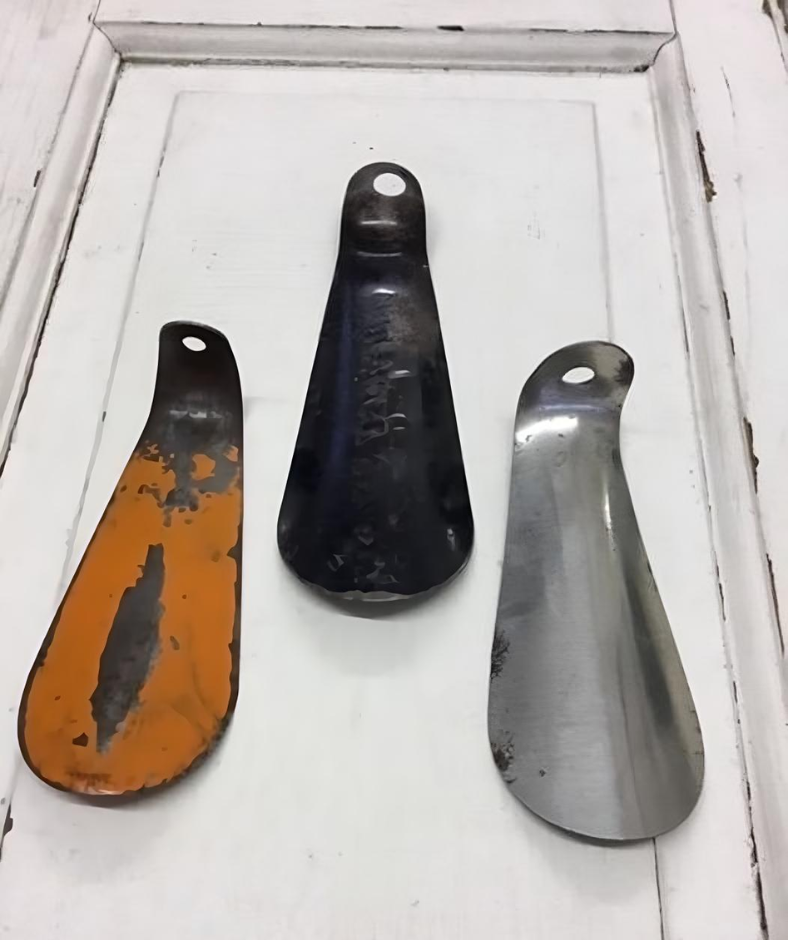The shoe horn—a simple, unassuming tool—has a story that stretches back over centuries. While it may not be the first item that comes to mind when you think of essential everyday objects, its impact on footwear and foot comfort is undeniable. From its humble beginnings in the 15th century to its continued use today, the shoe horn has maintained a quiet but important role in daily life. Let’s delve into the fascinating evolution of the shoe horn, exploring its origins, design innovations, and enduring appeal.
The Origins: How the Shoe Horn Came to Be

The story of the shoe horn begins in the 15th century, during a time when shoes were handcrafted and often quite expensive. The delicate nature of these shoes made it essential to have a tool that would prevent wear and tear during use. The shoe horn emerged as a solution, helping people slide their feet into snug shoes without damaging the heel counter—a common issue with early footwear.
These early shoe horns were often made from organic materials like animal horn, bone, or wood. They were handcrafted and designed to be both functional and practical, serving as a simple yet effective tool. The use of horn for this tool is what likely inspired the term “shoe horn,” a name that has stuck throughout the ages.
Material Evolution: From Horn and Bone to Metal and Plastic
As footwear design advanced, so did the materials used to create shoe horns. By the 17th and 18th centuries, manufacturers began to experiment with more durable materials, including metals like brass and copper. This shift not only made shoe horns sturdier but also allowed for more intricate designs, enhancing their aesthetic appeal.
The introduction of plastics in the 20th century marked another significant evolution in shoe horn design. Plastic shoe horns offered a lightweight, affordable option that maintained the tool’s essential functionality. Despite the modern materials used, traditional shoe horns made from horn, wood, and metal continued to hold a special appeal for collectors and enthusiasts, often valued for their craftsmanship and historical significance.
How the Shoe Horn Works: A Simple Yet Effective Tool
The shoe horn’s utility lies in its straightforward design. Its curved shape allows users to guide their feet into shoes without bending or crushing the back of the shoe. This reduces strain on both the shoe and the foot, making it easier to put on shoes quickly and comfortably.
Here’s how it works:
- Place the Shoe Horn: Insert the shoe horn at the back of the shoe, with the curved end facing the heel.
- Slide Your Foot: Place your foot into the shoe, using the shoe horn to prevent the heel counter from collapsing.
- Remove the Shoe Horn: Once your foot is securely in place, simply slide the shoe horn out.
This simple process protects the integrity of the shoe while making it more comfortable to wear, especially with tight or stiff shoes.
Modern Designs: Adapting to New Needs
Today, shoe horns come in a variety of shapes, sizes, and materials, catering to different needs and preferences:
- Short Handheld Shoe Horns: These compact versions are perfect for everyday use, fitting easily in a bag or drawer. They’re ideal for on-the-go use, allowing you to put on shoes quickly wherever you are.
- Long-Handled Shoe Horns: Designed for individuals with limited mobility, these extended shoe horns make it easy to slip into shoes without bending over. They’re often used by seniors or those recovering from injuries, making footwear more accessible and reducing physical strain.
- Luxury Shoe Horns: For those who appreciate a touch of elegance, luxury shoe horns are crafted from high-quality materials like polished wood, brass, or even silver. These designs not only serve a practical purpose but also add a sense of sophistication to the shoe-wearing experience.
The Cultural Impact of Shoe Horns: From Function to Collectible
Shoe horns aren’t just functional—they’ve also become collectors’ items over the years. Vintage shoe horns, often made from materials like ivory, tortoiseshell, or intricately carved wood, are sought after by enthusiasts. These historical pieces reflect the craftsmanship of earlier eras, making them highly valuable not just for their utility but for their artistry.
Collectors often look for rare or unique designs, such as engraved metal shoe horns or those with decorative handles. These pieces offer a glimpse into the past, showcasing how even the simplest tools were crafted with care and attention to detail.
The Enduring Appeal of the Shoe Horn
Despite the advances in footwear technology and the introduction of slip-on designs, the shoe horn has never lost its appeal. Its enduring presence speaks to its timeless functionality, adapting to new materials and evolving needs without losing its core purpose.
Shoe horns remain a staple in many households, valued for their utility and nostalgic charm. In a world where convenience often overshadows tradition, the shoe horn stands as a testament to the power of functional design. Whether it’s a modern plastic version or a vintage piece passed down through generations, the shoe horn continues to serve a vital role in everyday life.
Conclusion: A Timeless Tool for Every Generation
The journey of the shoe horn is a remarkable tale of enduring utility, evolving design, and timeless appeal. From its origins in the 15th century to its continued relevance in the modern day, this humble tool has maintained its place in the hearts (and homes) of shoe-wearers around the world. Its simple yet effective design has stood the test of time, reminding us that sometimes, the most unassuming objects can have the greatest impact.
So, the next time you reach for a shoe horn, remember—you’re not just using a tool; you’re holding a piece of history, a symbol of practical innovation that has gracefully adapted to centuries of change.


